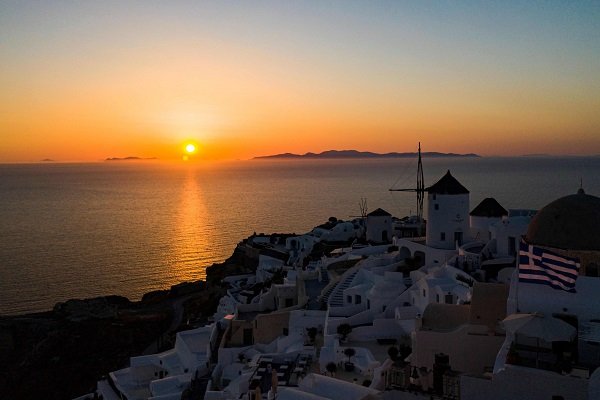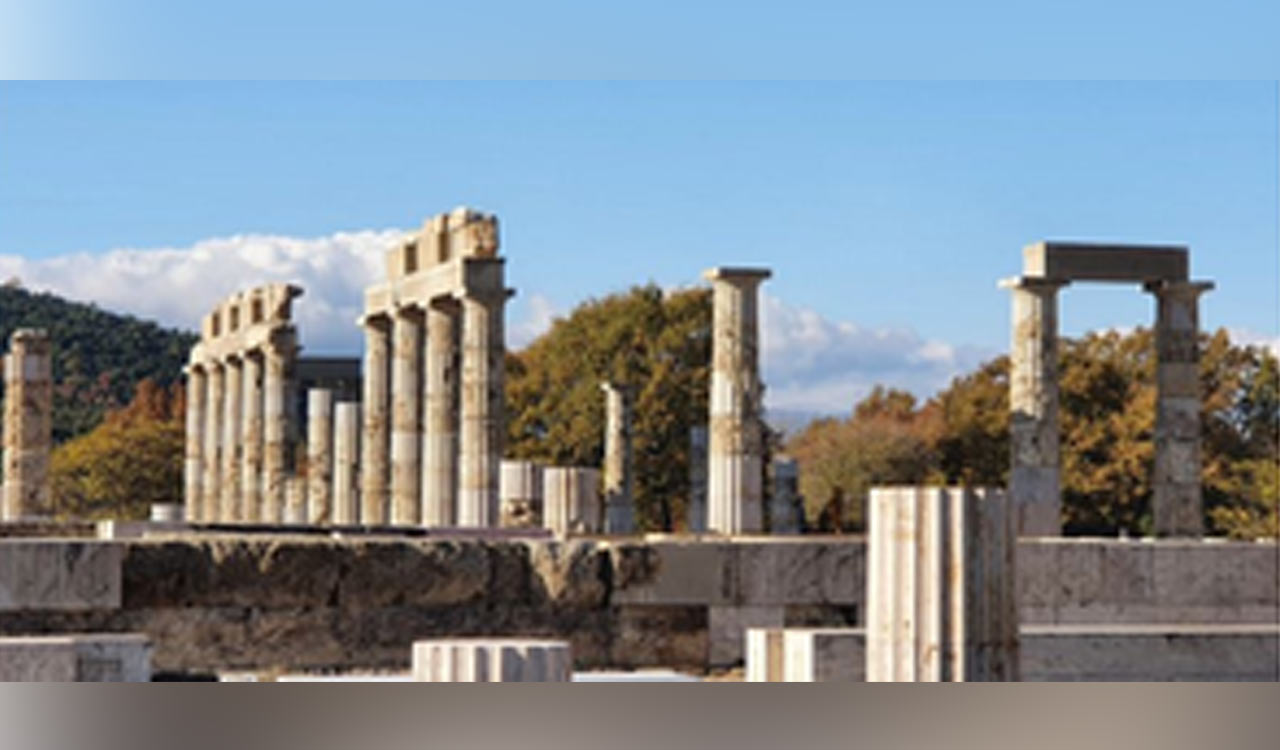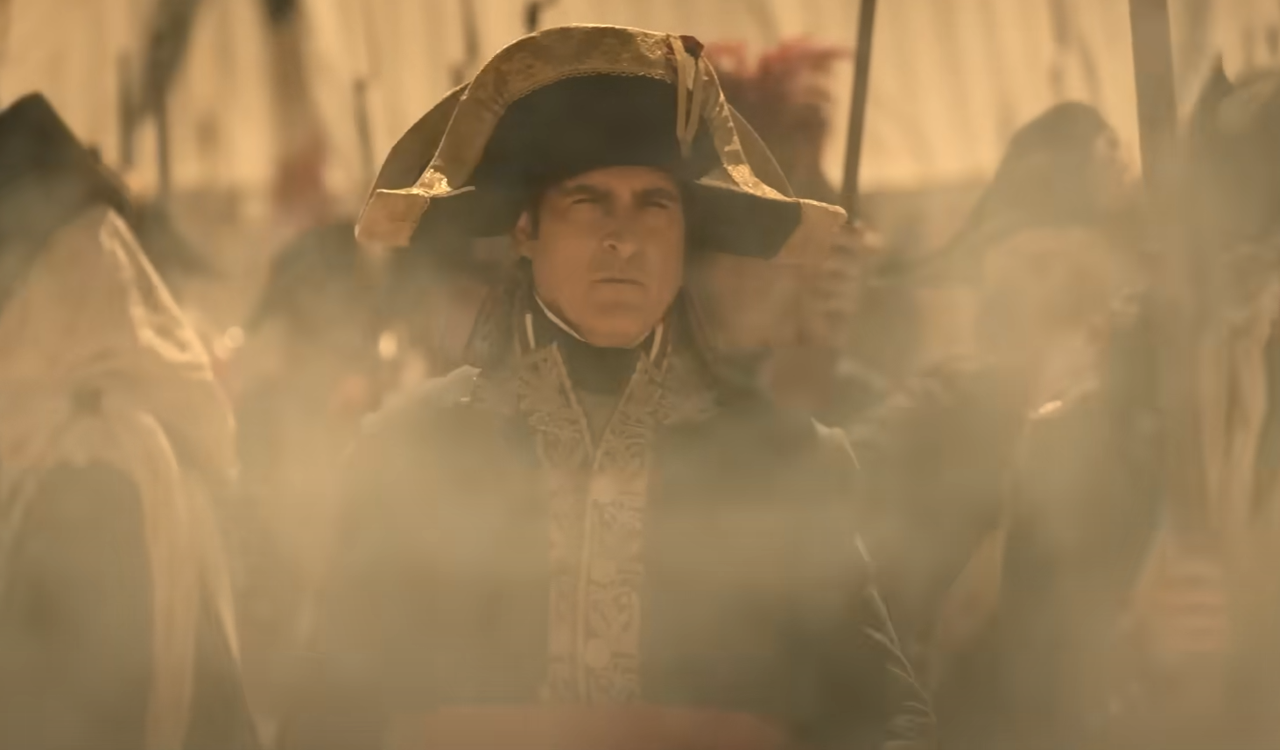Rewind: The Art of looting
Napoleon made looting of precious art more systematic and several wars later, art treasures seem to be the cause rather than the consequence of such rivalries

By KSS Seshan
Looting art treasures has been a human behaviour from the very early times in history. The Romans had the dubious credit of being the first of such invaders to loot the rich Greek art, sculptures and heritage artefacts when they conquered Greece in 396 BC. The contents of all the tombs of the Pharaohs were found looted by grave robbers before the invasion of Egypt by Alexander the Great in 332 BC.
Also Read
Art loot was a common feature in Europe as there was very little or no difference in society, culture and religion among the nations. It was only in 1815 after the Congress of Vienna made efforts to discredit this system that there existed an international convention to openly oppose such high-handed practice of the victorious nations.
Napoleon’s Splash
One distinct name that looms large in perfecting the process of looting art treasures from the defeated countries is that of Napoleon Bonaparte, the French emperor (1804-1814), perfected the process of looting art treasures.
Napoleon Bonaparte, the French emperor (1804-1814), believed that crushing an enemy country through war was to be followed by looting all the treasures of the vanquished. For him, victory was not only about territorial acquisition, it was also quintessentially a proof of superiority, a means to subjugate, humiliate and oppress the vanquished and also sequester everything, including the symbols of their nationhood, treasures and artefacts, thus giving a deathblow to the historical, social and cultural pride of the defeated countries.
Napoleon was neither the first nor the last emperor to loot international art from the conquered territories, but, he was, without doubt, the first wartime looter to make such looting more systematic, and as the ‘prerogative’ of the victor over the vanquished. The ‘art’ was so perfected by him that even in the later decades, art treasures seemed to be the cause rather than the consequence of such rivalries. Napoleon and his troops pillaged art on such a vast scale that the museums in Paris were flooded with looted art and the city virtually became, for a while, the capital of world art.
However, even before Napoleon was to command the French armies during the turbulent revolutionary years (1789-1799), France had the habit of seizing valuable works of art from countries like Germany and Austria. Under the Bourbon emperors who were well-known for their lavish lifestyles and magnificent palaces like the Versailles and Tuileries, the French collective mind believed that their country was the only place on earth worthy of all the best art.
Rich Haul of Italian Art
In March 1796, Napoleon was appointed as commander of French forces to march against Italy which was politically under Austria. As he went ahead defeating the Austrian forces, Napoleon discovered to his amazement that almost all the Italian states had large treasures of art hitherto unheard of.
From Padua, the northern Italian state, Napoleon dispatched about 20 large paintings by legendary painters like Correggio and Michelangelo. From Milan, he sent an equal number of priceless artworks done centuries ago by all-time greats like Raphael, Rubens, Luini, Titian and Leonardo da Vinci. It became almost a habit for Napoleon from then on to include in the very terms of the treaties with Italian princes to surrender a considerable number of art treasures. This he did even to the Pope. The Peace of Bologna (1796) gave France hundreds of pictures, busts, vases and numerous marble statues of stunning beauty. Besides, the Pope was made to part with 500 valuable ancient manuscripts and to cap it all, he was made to pay for the transportation of all the confiscated treasures to Paris!
Napoleon made it mandatory for the accompanying French Commissioners of Art to enter any building, public or private, after the victorious war to confiscate any art object. In the treaty of Campo Formio (1797) that brought Napoleon’s first Italian expedition to a glorious finale, he made it clear that every Italian city had to contribute pieces of art to France. Back home, Napoleon got all his war booty paraded in the streets of Paris for two days in July, 1798, before sending them to the Louvre Museum.
Statue of Four Horses
Among all the Italian art acquisitions, the statue of the ‘Four Horses’ that Napoleon plundered from Venice was the most significant one. The Greek sculpture of bronze horses, said to have been made by Lysippus during the time of Alexander the Great, was taken away by Emperor Constantine, who put it in his new capital, Constantinople, in the 4th Century AD. During the Crusades, the long-drawn religious wars, the sculpture was taken away by the invading Christian forces in 1204 AD. It was placed on the top of St Mark’s Basilica in Venice.
In 1797, Napoleon took great pride in removing the stunningly beautiful ‘Four Horses’ and after carefully transporting them to France, they were placed on the top of the Arc De Triumph, which he got specially constructed, in Paris. At one point, he wanted to get the ‘Four Horses’ to be melted to make cannon balls. But the foundry in charge, fascinated by the beauty of the sculpture, said the horses were made of the wrong allay not suitable for cannon balls.
After the successful Italian expedition, Napoleon was sent with a large French army to Egypt with the intention of checking the increasing influence of the English in the East. This time, he took with him artists and Egyptologists, whose role was to find if artefacts were worthy. Unfortunately, Napoleon had a tough time with the English navy under the able admiral Nelson. His plans went astray when the French fleets were overawed by the English.
Sensing the imminent danger from the formidable British navy, Napoleon went back to Paris only to enact a coup to become the Consul. However, several art objects fell into the hands of the British. The precious Rosetta Stone that the French collected near Alexandria was seized by the British and presented to their King George III. It is now a prominent exhibit in the British Museum in London.
In 1808, Napoleon invaded Spain and put his own brother, Joseph Bonaparte, on the throne at Madrid and confiscated thousands of
paintings besides other treasures from the deposed king Ferdinand VII. Even from Germany and Austria, the French armies under Napoleon brought away a number of precious art objects.
After crowning himself as the emperor in 1804, Napoleon’s desire
was to make Paris the most beautiful city in Europe. The art objects he looted were to serve to that end. He ostentatiously renamed the Louvre Museum in his own name as Musee Napoleon. (Museum of Napoleon) and appointed Denon, a close follower of his wife, Josephine, as its Director. Whenever jewels were confiscated, Napoleon sent them to Josephine. She would keep a large part for herself, distribute a few pieces among her favourites and send the rest to the Louvre. There was plundering even by Napoleon’s soldiers and officials. Many works of art were sold for personal gain.
Collapse of Art Empire
With the defeat of Napoleon in the battle of Waterloo in 1815, not only the vast empire he established came crumbling down, but his art empire too crashed. A clause in the Treaty of Paris signed with the Duke of Wellington stipulated that all the works of art that Napoleon looted should be returned to the original owners.
Prussia was the first to take away all its precious paintings from the Louvre and other museums. Germans followed suit. The Dutch and the Spaniards also took everything that was theirs. Even the Austrians and Italians removed their treasures. All such retrieval was done during the night so as to avoid any protests from the Parisian mobs.
The ‘Four Horses’ was sent back to Venice where it was placed on the top of St Basilica exactly from where Napoleon had spirited away. The Pope also sent his representatives to bring back the Papal art objects. It is said that with such large-scale returning, the Louvre lost thousands of exhibits in every section —paintings, sculptures, bronzes and vases. However, a very impressive painting, ‘The Wedding Feast at Cana’, done by Paolo Veronese in 1563 and plundered by Napoleon from a Church in Venice was left behind as experts warned of its imminent damage in transportation because of its unusually large size. Fully restored, this painting is a big draw next only to the Mona Lisa today at the Louvre.
Loot Continued
The fall of Napoleon did not deter the later conquerors to desist from art looting. In 1871, at the conclusion of the Franco-Prussian war and after the Prussian king Kaiser Wilhelm was crowned as the German emperor by Chancellor Otto Von Bismarck, the victorious German armies at the orders of Bismarck, took several pieces of art from the museums in France to show that they were only replicating what Napoleon did to them earlier.
Loot by Hitler
During the Nazi regime, Adolf Hitler and his men seized an estimated one-fifth of all art in Europe amounting to more than 5 million cultural objects before 1945. The Nazis started occupying the Jewish properties and their artefacts from 1933 onwards. Hitler is reported to have ordered that all the looted art be placed at his personal disposal.
The plundered treasures from Poland alone were estimated at $20 billion. These were hidden in several castles and also in salt mines all over Germany. However, after the defeat of Hitler and the end of World War II, it became the responsibility of the Allied countries to return the looted art to their original owners in accordance with natural justice. A special unit of the Allied army called ‘Monuments Men’ was created to save works of art that the Nazis had seized.
Loot at Mysore
In India, a significant loot of art was in Mysore when Tipu Sultan was defeated and killed on 4 May 1799. In the treaty of Mysore that ensued, army generals, including the Wellesley brothers — Richard (Governor-General), William (Secretary to GG) and Arthur (Commander), besides Richard Clive, the then Governor of Madras, had their share of the booty. The golden throne of Tipu studded with precious stones was ripped and its Tiger heads were divided according to the rank and file of the army generals. Even ordinary army men had their share of the war booty after the indiscriminate pillage of the palace at Srirangapatam. Tipu’s swords, rare books and manuscripts, ivory artefacts, curious furnishings and almost everything that the victorious army could lay its hands on were spirited away.
Today the Scottish National Museum and the War Museum inside the castle at Edinburgh have a large collection of Mysore artefacts. A private museum set up by Richard Clive at his Powis Castle in Wales has numerous objects of Tipu including his sandalwood cot, camp tent and the two cannon carriages.
Mir Alam, the prime minister of Hyderabad State, who represented the Nizam as an ally of the British, at the treaty of Mysore chose large chandeliers, which were in Tipu’s palace, as his share. Reputed to be the largest in the world, these chandeliers are said to have been made by French artisans employed by Tipu. Now they are seen majestically hanging at Chowmahalla Palace, not far from Charminar in Hyderabad.

(The author is a retired Professor of History at the University of Hyderabad)
Related News
-
Five migrants dead, several missing and dozens rescued in 4 separate coast guard operations off Greece
-
In landmark change, Greece legalises same-sex marriage
-
Greece to reopen ancient palace where Alexander the Great was crowned
-
‘Napoleon’: Nuanced portrayal of the French emperor’s rise, love, and fall
-
Cartoon Today on December 25, 2024
7 hours ago -
Sandhya Theatre stampede case: Allu Arjun questioned for 3 hours by Chikkadpallly police
8 hours ago -
Telangana: TRSMA pitches for 15% school fee hike and Right to Fee Collection Act
8 hours ago -
Former Home Secretary Ajay Kumar Bhalla appointed Manipur Governor, Kerala Governor shifted to Bihar
8 hours ago -
Hyderabad: Organs of 74-year-old man donated as part of Jeevandan
8 hours ago -
Opinion: The China factor in India-Nepal relations
9 hours ago -
Editorial: Modi’s Kuwait outreach
9 hours ago -
Telangana HC suspends orders against KCR and Harish Rao
9 hours ago




